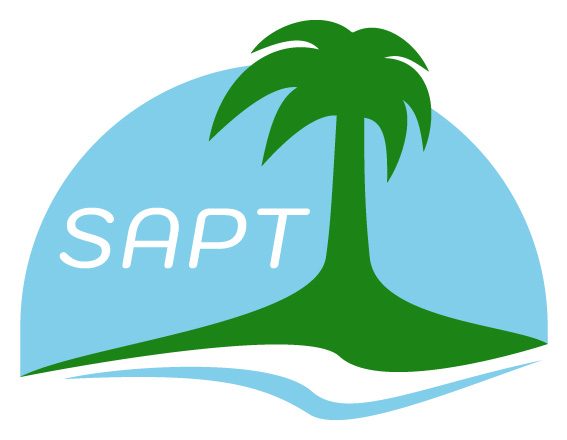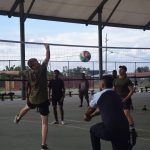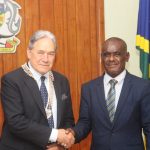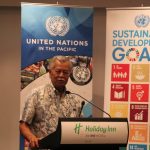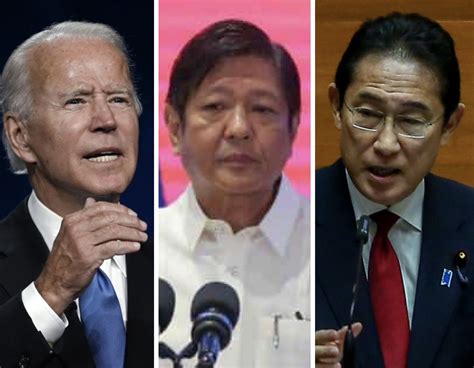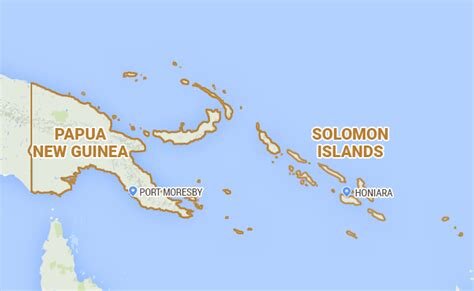by Richard Sanders
The U.S.-Philippines-Japan summit is taking place this week against the backdrop of increased tensions in the South China Sea, also called the West Philippines Sea in the Philippines, between Beijing and Manila. China’s so-called “gray zone” activities were observed in two incidents last month alone: on March 5 Chinese ships collided with Philippine Coast Guard vessels, and on March 23 a water cannon was used to blast a Philippines supply boat. When President Joe Biden, Philippine President Ferdinando Marcos Jr., and Japanese Prime Minister Fumio Kishida meet in Washington on April 11, these disputes in the West Philippines Sea—an issue on which U.S., Japanese, and Philippine interests are closely aligned—will be prominently featured.
For years, China has been conducting incursions into the West Philippine Sea, constructing and fortifying artificial islands, disobeying a significant international decision, and waging a growing campaign of aggression and danger against the Philippines. For instance, on March 5, maneuvers by the Chinese Coast Guard and Chinese Maritime Militia led to collisions with the Coast Guard of the Philippines. Tensions have really increased as a result of Chinese water cannon attacks; the most recent one, which occurred on March 23, seriously damaged a Philippines supply boat and injured a few crew members. There are two reasons why this context matters. It first exposes the obvious “gaslighting” tactic that forms the basis of China’s discourse. Second, it draws attention to how unstable the West Philippine Sea situation is right now. Prior trilateral meetings have placed a strong emphasis on maritime security cooperation, with promises to increase exercises and mutual access to bases. Joint naval patrols are anticipated to be announced after the first trilateral Coast Guard exercise in June 2023. These actions show a shared belief that stronger security cooperation among friends will strengthen regional security and serve as a deterrent to China. The itinerary for Kishida’s visit has been extensive and includes several bilateral events, such as a speech to Congress. The visit is significant for the alliance between the United States and Japan, which is the backbone of the administration’s regional policy and a constituent of all the major new minilateral organizations. Kishida’s visit comes after the other Quad members’ state visits. Kishida, who is not very popular in his own country, will also try to play this for domestic political purposes.
The invitation from Marcos, which was decided upon at the eleventh hour, is indicative of the momentum in trilateral relations between the United States, the Philippines, and Japan. After taking over from former President Rodrigo Duterte, who aimed to strengthen ties with China and weaken the alliance with the United States, Marcos has completely changed the foreign policy of the Philippines. These days, the leaders of all three nations are attempting to institutionalize a new, coordinated strategy for regional security as soon as possible.
This week’s summit will center on cybersecurity matters in addition to maritime security cooperation, with the three nations anticipated to approve a cooperative framework for cyber defense. Cyberattacks by hackers connected to North Korea, China, and Russia pose a common security risk, and a rise in Chinese-linked cyberattacks targeting the Philippines has raised red flags in Tokyo and Washington.
The signing of Executive Order 57 by Marcos, which creates a National Maritime Council to coordinate and unify Philippine maritime security and domain awareness, has been the most significant development to date. This is a step in a process that will see the Philippines Navy and Coast Guard modify the countermeasures they use. In recent weeks, the world community has united, at least in words, to support the Philippines. The U.S.-Philippines Mutual Defense Treaty, which Washington has made clear would apply to an attack on Philippines vessels, including its Coast Guard, could also quickly and directly involve the United States. The Philippines’ monthly requirement to replenish its garrison on the Sierra Madre raises the possibility of an incident of some kind occurring every month.
Not only should the US be realistic about how close its ally is to hostilities, but it should also be realistic about the amount of support that Washington alone can provide. Joint exercises and increased cooperation should be the new floor, not the ceiling, even when combined with Japan as part of the developing trilateral relationship between the United States, the Philippines, and Japan. As a diligent and humble partner to Manila, Washington should carefully balance its engagement with China while swiftly growing the network of alliances dedicated to the international rules-based system. The United States’ influence and popularity in Southeast Asia generally trail behind that of the Philippines. The Philippines must take the lead in any engagement, with requested assistance from the US. Smaller bilateral agreements could be used to fortify larger multilateral coalitions like ASEAN if they fail.
Proclamations of support from other countries, especially those in the European Union, have poured in for the Philippines and the rules-based order. Words must now be accompanied by deeds. The Philippines already welcomes deployments through cooperative mechanisms such as cooperative training and freedom of navigation operations from several important EU member states. The UK in particular has responded to growing Chinese aggression in the West Philippine Sea over the past few months. Although Manila can and should receive support from Washington, in the end, the Philippines must take the lead since they are on the front lines.
